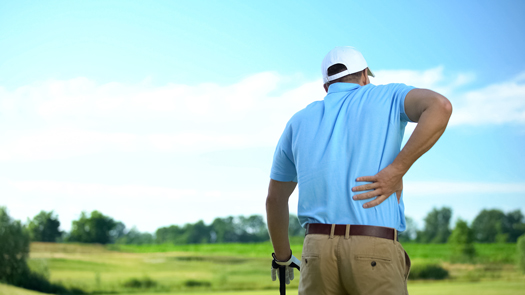
The terms "herniated" and "bulging" disc are often used interchangeably, but there are some important differences. The main one is that a bulging disc occurs when the exterior part of the spinal disc becomes weak enough to cause the disc to flatten or bulge to one side or the other of the spinal canal. Unlike a herniated disc, the disc itself doesn't rupture in this case, but a bulging disc can still irritate a nearby nerve. Today, we're focusing on what could cause a spinal disc to bulge.
Age
According to Spine Universe, age-related changes already affect spinal discs to some extent by the time most people reach their twenties. However, what's referred to as degenerative disc disease is more likely to contribute to noticeable issues like disc bulging in middle age and during the later years of life. Age can also cause discs to bulge due to:
• Natural flattening or shifting of discs
• Reduced hydration levels that make spinal discs less spongy
• Related damage from arthritis that could also affect discs
Sudden Spine-Related Trauma
Regardless of your age, a spinal disc can bulge as a result of a sudden or forceful impact. This could happen after a hard fall on a slippery surface, a powerful hit while playing contact sports, or an incident like a car accident. Impacts of this nature might also cause a disc to shift out of place in a way that puts enough extra pressure on it to contribute to bulging.
Repetitive Movements
You could also have issues with a bulging spinal disc if you make the same general movements (such as lifting and moving packages or other large objects) on a regular basis, as may be the case with certain occupations. The recurring stress and strain within one part of the spine can result in disc bulging that develops in a more gradual way.
Poor Posture
Posture-related habits that aren't so spine friendly could be just as bad for your spine's discs as they are for other parts of your body. Poor posture behaviors or habits that tend to affect spinal discs more often include:
• Slouching
• Sitting in the same position for long periods
• Sleeping in positions that don't maintain natural spine alignment
• Excessive leaning
Genetic Susceptibility
There’s evidence suggesting certain conditions that sometimes lead to a bulging disc may run in families. The U.S. Library of Medicine cites studies showing possible genetic influences related to disc degeneration, which is a factor that could contribute to disc bulging.
Recognizing & Preventing Disc Bulging
You may have a bulging spinal disc and never know it. It’s only when a nearby nerve is irritated that a bulging disc becomes a problem requiring more immediate medical attention. Signs suggesting you may have a bulging spinal disc include:
• Back pain that comes and goes
• Discomfort associated with certain movements
• Muscle spasms, especially around your lower back area
• Weak muscles in areas close to your spine, such as your thighs and legs
• Sciatic nerve symptoms that may include numbness and tingling sensations
Simply getting older doesn't mean you'll absolutely have a painful bulging disc. From watching what you eat and how much you regularly exercise to breaking poor posture habits, there are many small steps you can take to reduce your risk of having issues related to a bulging disc.
If you have sciatica back pain that’s severe and long-lasting, your doctor may recommend surgery to provide relief. For example, if you have a bulging or herniated disc, a discectomy may be the best option. Although this is generally a very successful procedure, patients with a larger hole in the outer ring of the disc have a significantly higher risk of reherniation following surgery. The surgeon won’t know the size of the hole until he or she begins surgery, and having a large hole in the outer ring of the disc more than doubles the risk of needing another operation. A new treatment, Barricaid, is a bone-anchored device that closes this hole, and it’s proven 95 percent effective in a large study. This means 95 percent of Barricaid patients didn’t undergo a reoperation due to reherniation in the 2-year study timeframe. This treatment is done immediately following the discectomy—during the same operation—and doesn’t require any additional incisions or time in the hospital.
If you have any questions about the Barricaid treatment, ask your doctor or contact us at 844-288-7474.
For full benefit/risk information, please visit: https://www.barricaid.com/instructions.


Comments